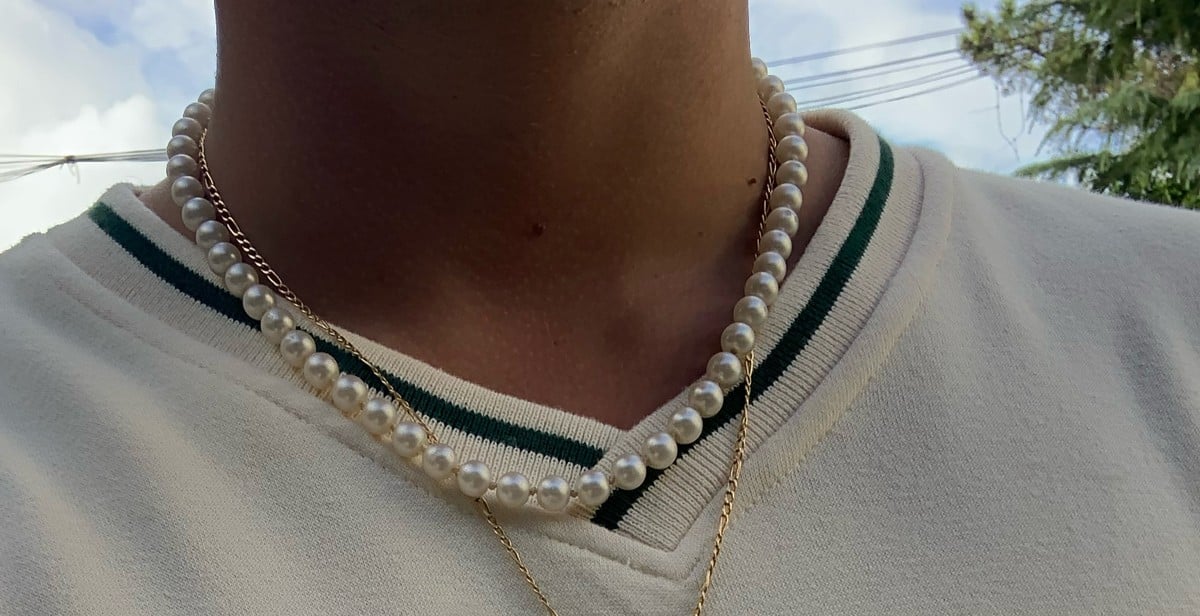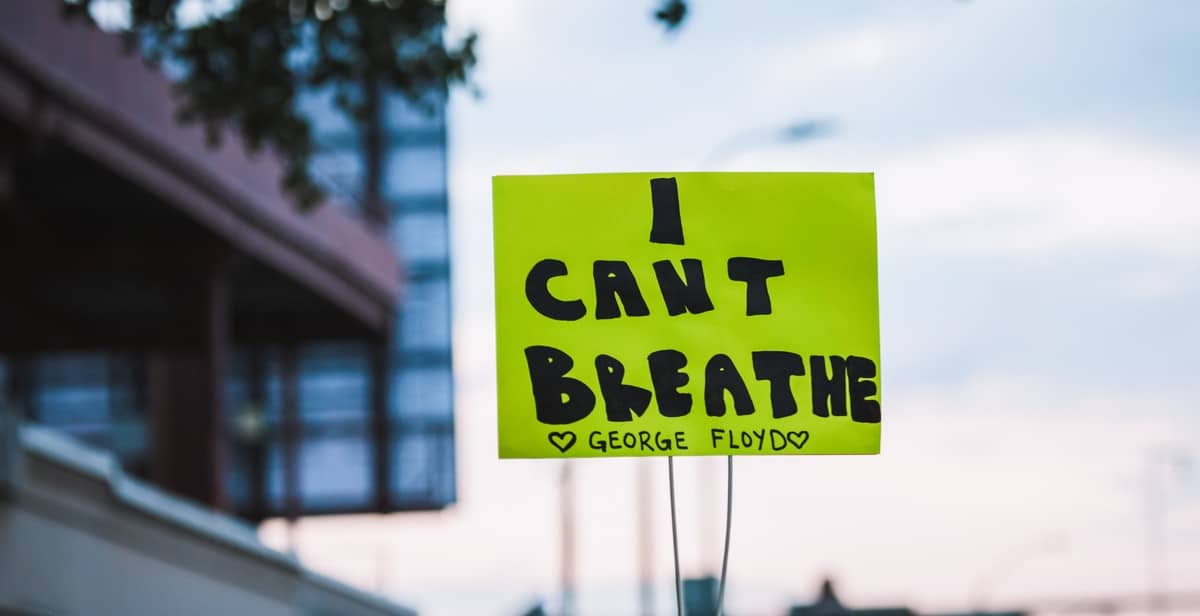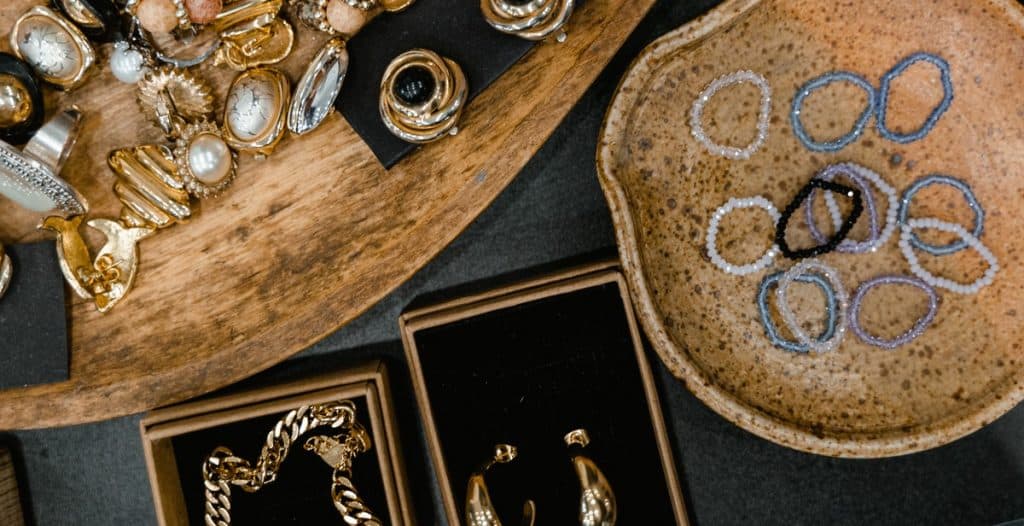The Power of Jewelry: Introduction
Jewelry has always been an important symbol of status, wealth, and power. Throughout history, people have used jewelry not only as a form of personal adornment but also as a means of making political statements. From ancient Egypt to modern-day America, jewelry has been worn to express political affiliations, beliefs, and even dissent.
In many cultures, jewelry has played a significant role in political and social events. For example, in Ancient Egypt, pharaohs wore jewelry to symbolize their divine status and power. In medieval Europe, crowns and other regalia were worn by monarchs to signify their authority and legitimacy.
But jewelry has also been used to make political statements that challenge authority and promote social change. In the 18th and 19th centuries, abolitionists in America wore jewelry with images of enslaved people in chains to raise awareness about the horrors of slavery. During the suffrage movement, women wore jewelry with images of the female figure to symbolize their fight for the right to vote.
Today, jewelry continues to be a powerful tool for political expression. From Black Lives Matter pendants to rainbow-colored pride bracelets, people wear jewelry to show their support for social justice causes and political movements.
This article will explore how jewelry has been used to make political statements throughout history and how it continues to be a symbol of power, resistance, and change.
Jewelry as a Symbol of Power and Status
Jewelry has been used as a symbol of power and status throughout history. From ancient times to modern days, jewelry has been worn by the powerful and wealthy to show their status and convey their political messages. In this section, we will explore how jewelry has been used to make political statements in different periods of history.
Jewelry in Ancient Egypt
Ancient Egyptians were known for their love of jewelry, and they believed that jewelry had magical powers. They wore jewelry not only for adornment but also as a symbol of their social status and political power. Pharaohs, for example, wore elaborate headdresses and collars made of gold, precious stones, and other materials to show their divine status and power over their subjects. Queens and noblewomen also wore intricate jewelry to show their wealth and influence.
One of the most famous examples of political jewelry in ancient Egypt is the cartouche, a pendant with the name of the pharaoh inscribed on it. The cartouche was worn by the pharaoh and his family as a symbol of their divine right to rule and their connection to the gods.
Jewelry in Ancient Rome
Like the Egyptians, the ancient Romans used jewelry as a symbol of power and status. Emperors and other members of the ruling class wore jewelry made of gold, silver, and precious stones to show their wealth and authority. They also used jewelry as a way to reward their loyal subjects and allies.
One of the most famous examples of political jewelry in ancient Rome is the signet ring. The signet ring was used to seal important documents and letters, and it was often personalized with the owner’s name, family crest, or other symbols of their status and power.
Jewelry in Medieval Europe
During the Middle Ages, jewelry continued to be an important symbol of power and status. Kings, queens, and other members of the nobility wore elaborate jewelry made of gold, silver, and precious stones to show their wealth and influence. They also used jewelry as a way to reward their loyal knights and allies.
One of the most famous examples of political jewelry in medieval Europe is the crown. The crown was a symbol of the king’s divine right to rule and his authority over his subjects. It was often adorned with precious stones and other materials to show the king’s wealth and power.
| Period | Country | Jewelry | Political Message |
|---|---|---|---|
| Ancient Egypt | Egypt | Cartouche | Divine right to rule |
| Ancient Rome | Rome | Signet ring | Authority and power |
| Medieval Europe | England | Crown | Divine right to rule and authority |
Throughout history, jewelry has been used to make political statements and convey messages of power and status. From the pharaohs of ancient Egypt to the kings and queens of medieval Europe, those in power have used jewelry to show their authority, wealth, and influence over their subjects.

Jewelry as a Tool for Political Propaganda
Jewelry has been used as a tool for political propaganda throughout history. The use of jewelry to make political statements dates back to the French Revolution. During this time, jewelry was used as a symbol of the revolution and a way to show support for the cause. People wore tricolor cockades, which were made up of red, white, and blue ribbons, to show their allegiance to the revolution. The cockades were worn on hats or as brooches and were a visible sign of support for the revolution.
The Suffragette Movement also used jewelry as a tool for political propaganda. Women who were part of the movement wore jewelry with symbols that represented their cause. The most famous piece of jewelry worn by Suffragettes was the “Holloway brooch,” which was given to women who had been imprisoned for their activism. The brooch was designed to look like a prison door with a portcullis, and the words “Votes for Women” were inscribed on it. The brooch became a symbol of the Suffragette movement and was worn proudly by women who supported the cause.
The Civil Rights Movement also used jewelry to make political statements. During this time, African Americans wore jewelry with symbols that represented their struggle for equality. The most famous symbol was the Black Panther Party’s emblem, which featured a black panther with its claws outstretched. The emblem was used on jewelry, including earrings and necklaces, to show support for the Black Panther Party and the Civil Rights Movement.
Jewelry in the French Revolution
The French Revolution was a time of political upheaval in France, and jewelry was used as a symbol of the revolution. People wore tricolor cockades, which were made up of red, white, and blue ribbons, to show their allegiance to the revolution. The cockades were worn on hats or as brooches and were a visible sign of support for the revolution. The French Revolution also saw the rise of “liberty caps,” which were red caps that were worn as a symbol of the revolution. The caps were often decorated with tricolor cockades or other symbols of the revolution.
Jewelry in the Suffragette Movement
The Suffragette Movement used jewelry as a tool for political propaganda. Women who were part of the movement wore jewelry with symbols that represented their cause. The most famous piece of jewelry worn by Suffragettes was the “Holloway brooch,” which was given to women who had been imprisoned for their activism. The brooch was designed to look like a prison door with a portcullis, and the words “Votes for Women” were inscribed on it. The brooch became a symbol of the Suffragette movement and was worn proudly by women who supported the cause.
Jewelry in the Civil Rights Movement
The Civil Rights Movement also used jewelry to make political statements. African Americans wore jewelry with symbols that represented their struggle for equality. The most famous symbol was the Black Panther Party’s emblem, which featured a black panther with its claws outstretched. The emblem was used on jewelry, including earrings and necklaces, to show support for the Black Panther Party and the Civil Rights Movement. Other symbols used on jewelry included the clenched fist, which was a symbol of solidarity, and the image of Martin Luther King Jr., who was a leader of the Civil Rights Movement.

Jewelry as a Statement of Solidarity
Throughout history, jewelry has been used as a powerful tool to make political statements and promote social justice causes. From the Anti-Apartheid Movement to the LGBTQ+ Rights Movement to the Black Lives Matter Movement, jewelry has served as a symbol of solidarity, resistance, and empowerment.
Jewelry in the Anti-Apartheid Movement
During the Anti-Apartheid Movement in South Africa, jewelry played a significant role in the struggle against racial segregation and discrimination. Black South Africans wore traditional beaded jewelry as a symbol of their cultural identity and resistance against the oppressive regime. The iconic black, green, and gold colors of the African National Congress (ANC) flag were also incorporated into jewelry designs to show support for the liberation movement. Nelson Mandela himself wore a beaded bracelet with the colors of the ANC flag during his imprisonment on Robben Island.
Jewelry in the LGBTQ+ Rights Movement
Jewelry has also been used to make political statements in the LGBTQ+ Rights Movement. The rainbow flag, which has become an emblem of the movement, has been incorporated into jewelry designs as a symbol of diversity and inclusivity. Other jewelry pieces, such as the pink triangle and the lambda symbol, have also been used to represent the struggle for LGBTQ+ rights and equality. By wearing these symbols, individuals can show their support for the movement and their commitment to fighting discrimination and prejudice.
Jewelry in the Black Lives Matter Movement
In recent years, jewelry has played a significant role in the Black Lives Matter Movement. The movement’s iconic symbol, the raised fist, has been incorporated into jewelry designs as a symbol of resistance and solidarity. Black Lives Matter bracelets, necklaces, and earrings have become popular ways for individuals to show their support for the movement and their commitment to ending police brutality and systemic racism. Additionally, jewelry featuring the names of Black victims of police violence, such as George Floyd and Breonna Taylor, serve as a powerful reminder of the need for justice and accountability.
| Jewelry Movement | Symbolism |
|---|---|
| Anti-Apartheid Movement | Traditional beaded jewelry and black, green, and gold colors of the ANC flag |
| LGBTQ+ Rights Movement | Rainbow flag, pink triangle, and lambda symbol |
| Black Lives Matter Movement | Raised fist, Black Lives Matter bracelets with the names of victims of police violence |
Conclusion
In conclusion, it is evident that jewelry has been used as a political tool throughout history. From ancient Egypt to modern-day politics, jewelry has been used to convey messages, beliefs, and ideals. The use of jewelry as a political statement is not limited to a particular culture, region, or time period. It is a universal language that transcends borders and time.
Jewelry as a Political Tool Today
The use of jewelry as a political tool is still prevalent today. Political leaders, activists, and individuals use jewelry to make statements and convey political messages. For instance, the iconic black and white ribbon worn by many during the Oscars in 2018 was a political statement against sexual harassment and assault in the entertainment industry. Similarly, the yellow ribbon has been used to show support for troops in the military.
Jewelry as a political tool is not limited to just ribbons. For example, the “pussyhat” became a symbol of the Women’s March in 2017, representing women’s rights and resistance against the Trump administration. Similarly, the “Notorious RBG” necklace worn by Justice Ruth Bader Ginsburg became a symbol of feminist iconography.
Final Thoughts
Jewelry has played a significant role in politics throughout history, and it continues to do so today. The use of jewelry as a political statement is a powerful way to convey messages, beliefs, and ideals. It is a form of self-expression that has the ability to unite people and spark change. As we continue to navigate the complexities of politics and society, it is important to recognize the power of jewelry as a political tool.

